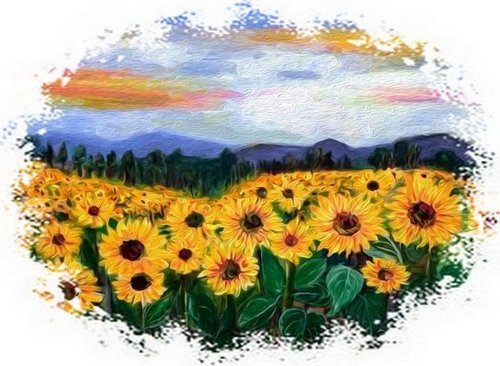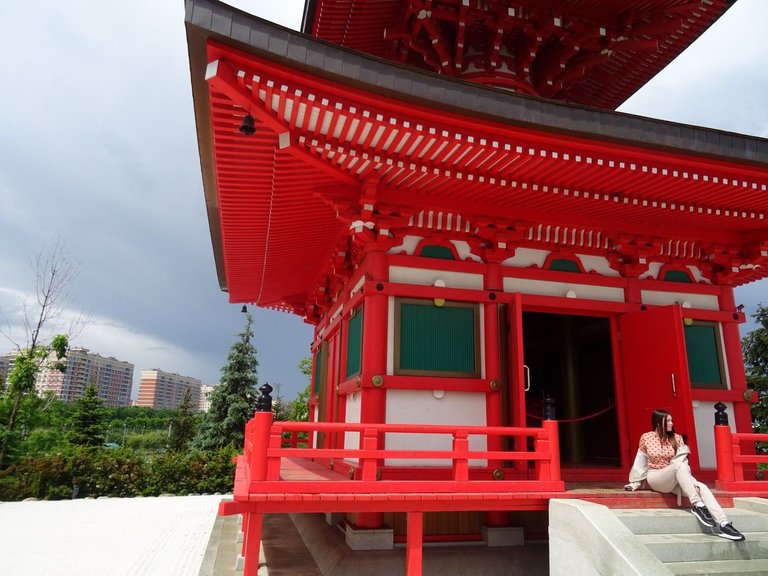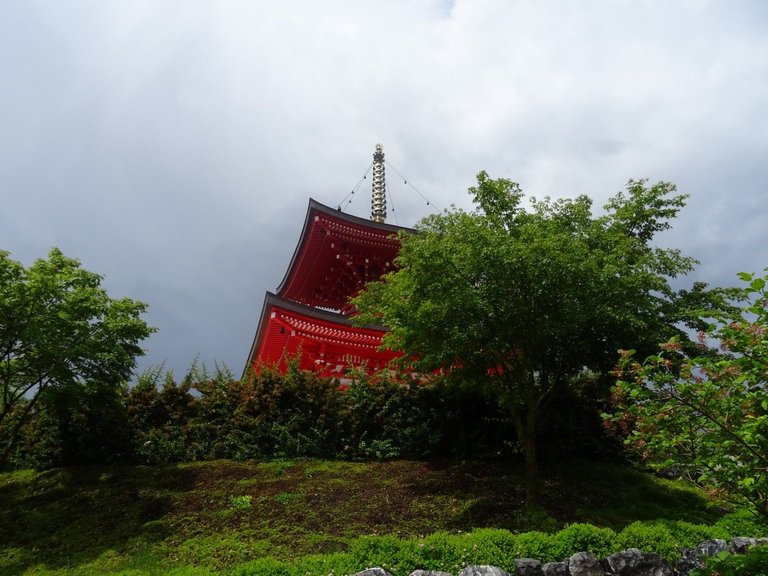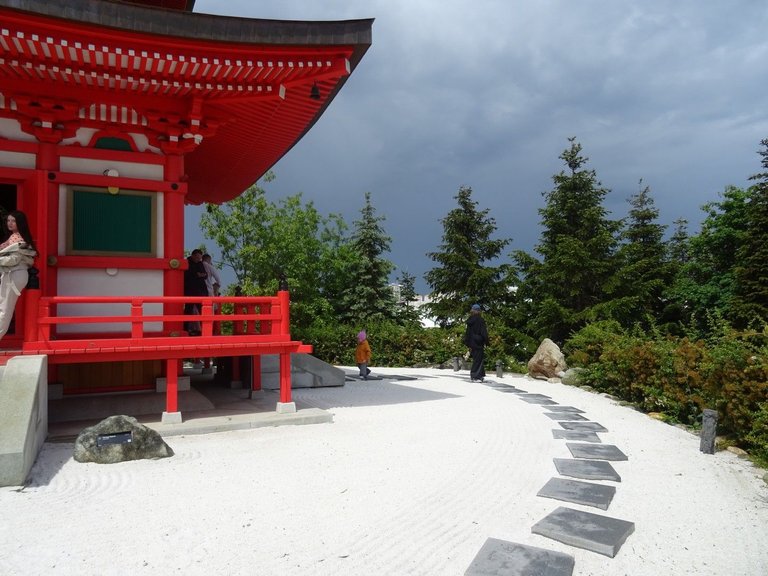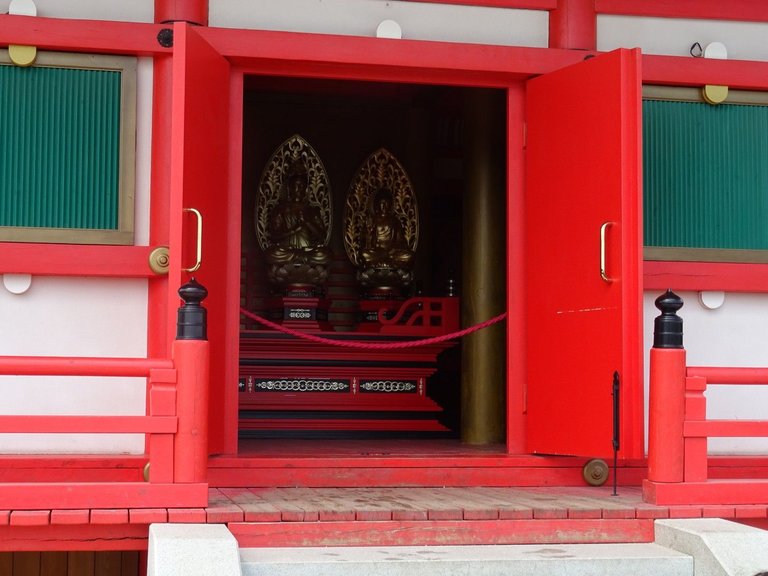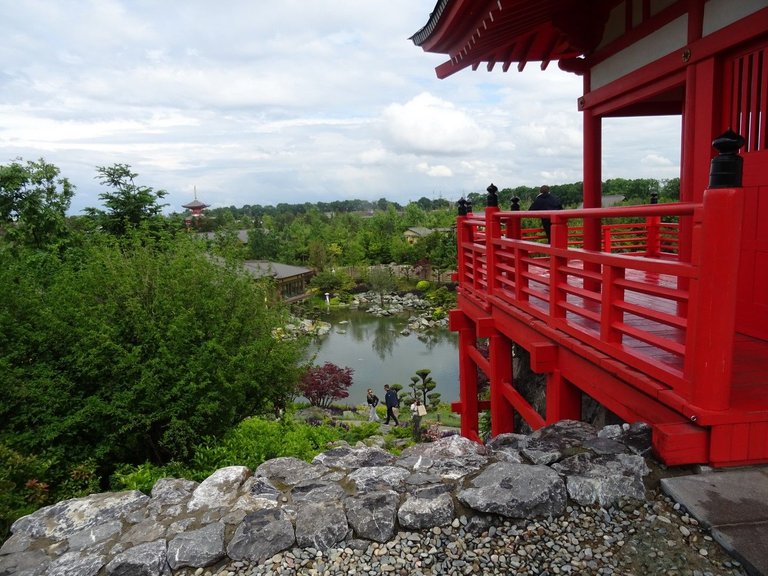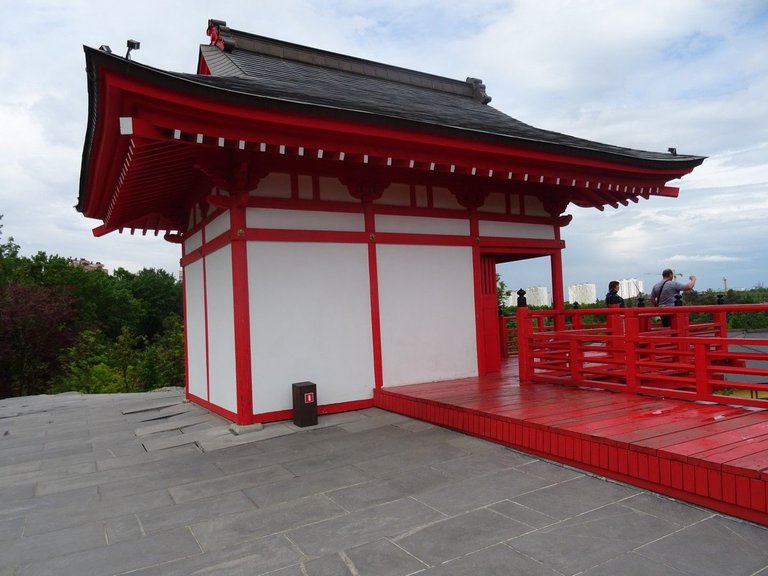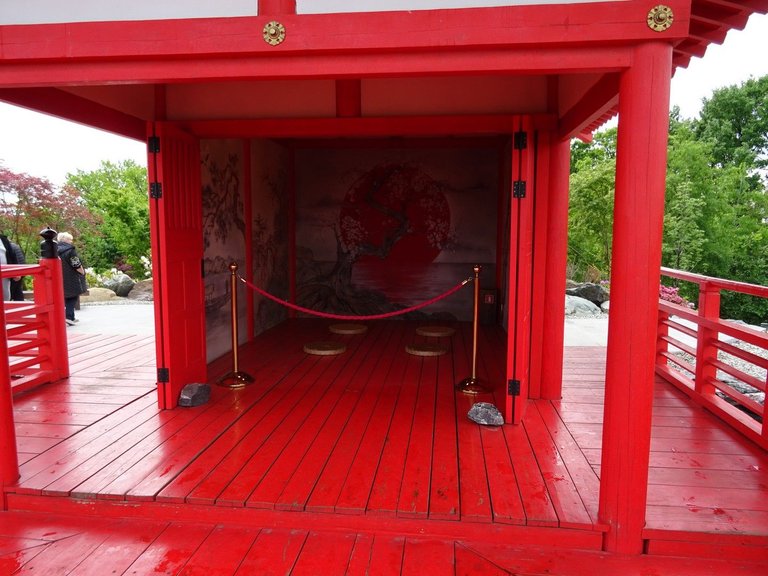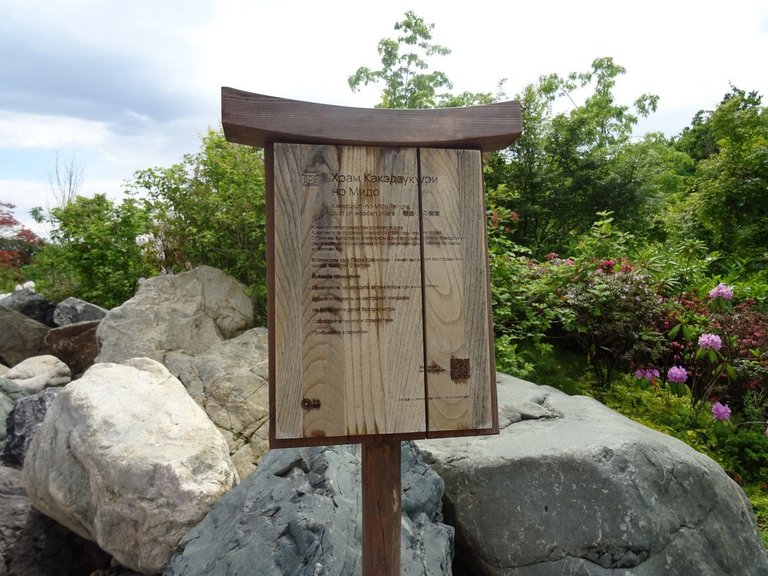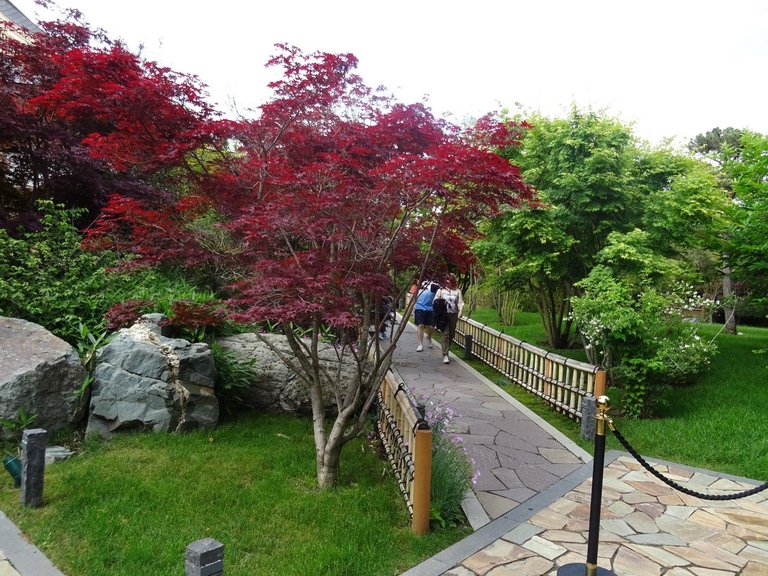Piece of Japanese culture in the sunny Kuban
I invite all of you to visit with me our little fabulous Japan, which was miraculously formed in our Kuban. Yes, yes, it was the Japanese garden that was recently opened in Krasnodar. And what is a Japanese garden without a real Japanese pagoda?
Here is the real Japanese pagoda of Takhoto 多宝塔
The Tahoto Pagoda in Japan's iconic Buddhist architecture is a repository of relics.
The Tahoto Tower consists of a square lower tier, denoting the earth element, and a round upper tier, a symbol of the element of water.
Its roof is in the shape of a quadrangular pyramid, topped with a vertical axis of Sorin and represents the Sun. But the combination of round and square shapes is already a sign of the union of Heaven and Earth.
It will be very difficult not to notice it, since this is the brightest part of the park. The color of the building is red "akai", which symbolizes peace, security, prosperity of the family, as well as embodies the riot of life and, according to Japanese religion, repels the forces of evil.
The inner walls of the Pagoda are hand-painted with images of the deities of the Japanese pantheon. This architecture of the building belongs to the Chusei era of the Kamakura period, which dates back as far as 1185 to 1333.
The Tahoto Pagoda is a place of harmony where the energy of the surrounding space accumulates. It's quiet and peaceful here. And you really feel in harmony with nature. Problems go away, bad mood and the body relaxes.
Of course, it is very unusual to see a real Japanese-style pagoda against the background of high-rise buildings in an ordinary residential area. But you will be even more surprised when you see this beautiful temple on pillars
Kakezukuri no Mido 懸造りの御堂
Kakezukuri no Mido Temple is considered a symbol of fortitude in Japan.
This building is made in the Japanese architectural style kakezukuri. Its characteristic feature is the presence of supports holding the building on rocks or mountain slopes.
It is on the sacred mountains, as the Japanese themselves believe, that the gods live. Previously, similar structures were erected for worship and pilgrimage.
Among the buildings in this architectural style, the oldest in Japan itself is the temple on the pillars of Hase-dera, which was built back in 686.
Details about the temple itself and the rules of conduct in it can be read on a special stand, which is made in the spirit of Japanese culture.
There are, of course, many stones of the most bizarre shapes and colors around the temple. By the way, the birds sing here even a little quieter than in other places of our park.
And I will try to tell you a lot more interesting and entertaining things about them. It will be very soon, don't miss it.
I appreciate Your feedback and comments.
I wish you luck and have a nice day!
Best wishes!
